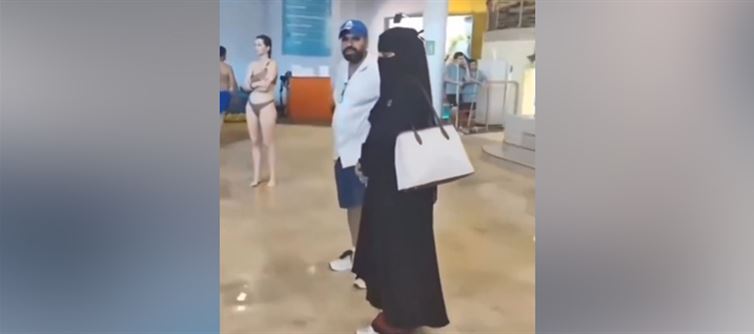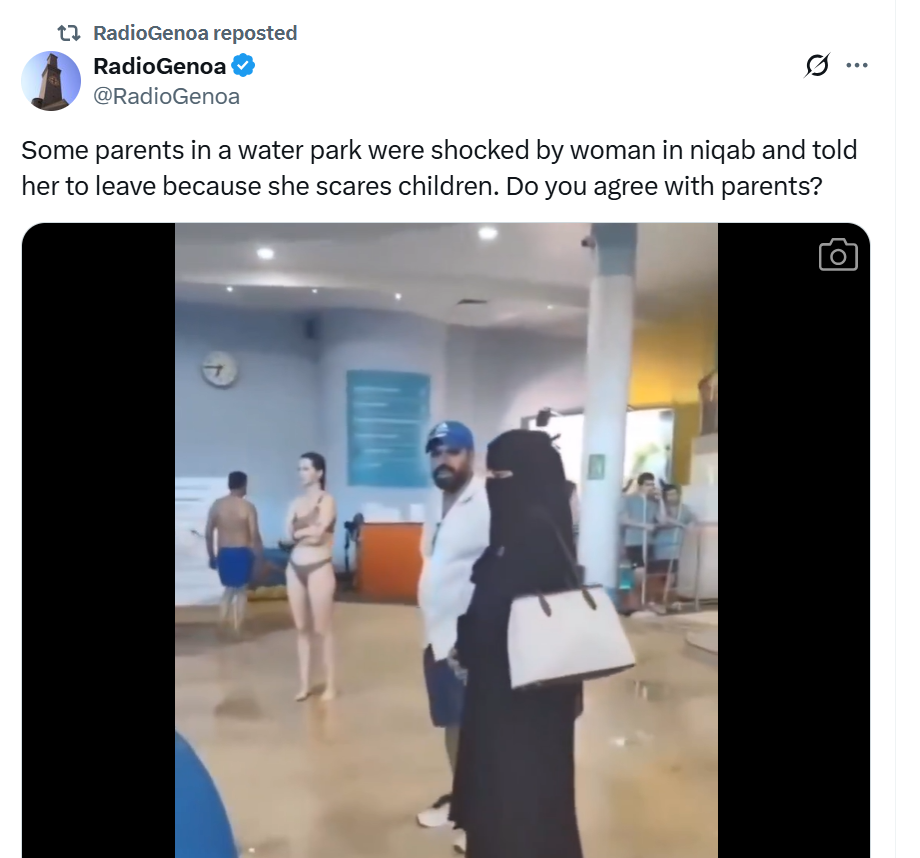
The viral comment on X (formerly Twitter), stating, “It’s a free world. people can wear whatever they want or nothing at all…,” highlights a key point in the debate: true freedom in liberal societies means allowing for both minimal and maximal expressions of identity, so long as they do not harm others. If people are free to wear swimsuits or even very little clothing at such venues, then logically, they should also be free to dress conservatively — even fully covered — without facing harassment. Demanding that someone leave simply because their clothing makes others uncomfortable sets a dangerous precedent for policing appearance based on subjective standards.
 This situation underscores the importance of mutual respect in pluralistic societies. Discomfort alone is not grounds for exclusion, especially when no rules are being broken. While it’s valid for parents to feel protective of their children, it's equally important to educate future generations to coexist with people from different backgrounds and traditions. Rather than reacting with fear, such moments can serve as opportunities to teach inclusivity and challenge unconscious bias. Only through this lens can diverse societies uphold the freedoms they claim to protect.
This situation underscores the importance of mutual respect in pluralistic societies. Discomfort alone is not grounds for exclusion, especially when no rules are being broken. While it’s valid for parents to feel protective of their children, it's equally important to educate future generations to coexist with people from different backgrounds and traditions. Rather than reacting with fear, such moments can serve as opportunities to teach inclusivity and challenge unconscious bias. Only through this lens can diverse societies uphold the freedoms they claim to protect.




 click and follow Indiaherald WhatsApp channel
click and follow Indiaherald WhatsApp channel